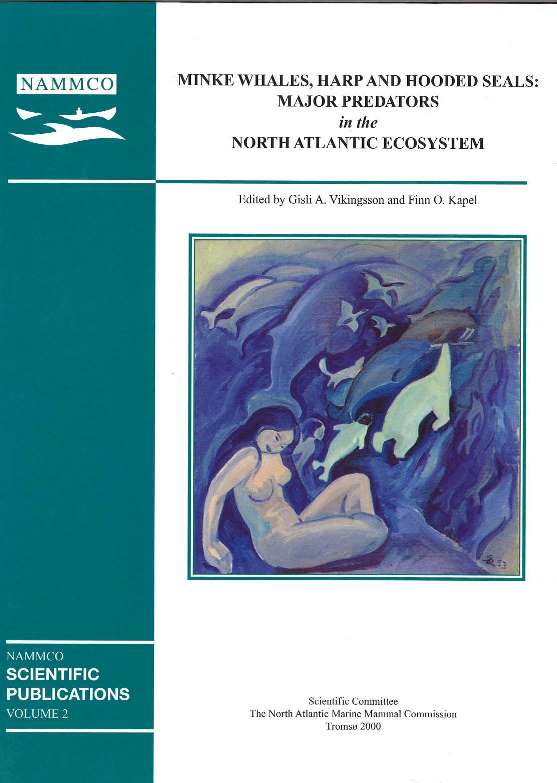Direct and indirect effects of minke whale abundance on cod and herring fisheries: A scenario experiment for the Greater Barents Sea
DOI:
https://doi.org/10.7557/3.2976Keywords:
minke whales, Balaenoptera acutorostrata, cod, capelin, herring, modelling, interactionsAbstract
To study the pattern of interaction between minke whale (Balaenoptera acutorostrata) abundance and the main fisheries in the Greater Barents Sea, a simulation experiment was carried out. The population model involves 4 species interconnected in a food web: cod (Gadus morhua), capelin (Mallotus villosus), herring (Clupea harengus) and minke whales. Minke whales are preying on cod, capelin and
herring; cod are preying on (young) cod, capelin and herring; herring in the Barents Sea are preying on capelin; while capelin is a bottom prey in the model. The consumption function for minke whales is non-linear in available prey abundance, and is estimated from stomach content data and prey abundance data. The model is dynamic, with a time step of one month, and there are two areas: the Barents
Sea and the Norwegian Sea. Minke whale abundances are kept on fixed levels, while recruitment in fish is stochastic.
Cod and herring fisheries are managed by quotas targeting fixed fishing mortalities, while capelin is managed with a view to allow the cod to have enough food and leaving a sufficient spawning stock of capelin. The model is simulated over a period of 100 years for a number of fixed levels of minke whale
abundance, and simulated catches of cod, herring and capelin are recorded.
The experiment showed interactions between whale abundance and fish catches to be mainly linear. For cod catches, both the direct effect of whales consuming cod, and the indirect effect due to whales competing with cod for food and otherwise altering the ecosystem, are linear and of equal importance. The net effect on the herring fishery is of the same magnitude as the net effect on the cod fishery, with
each extra whale reducing the catches of both species by some 5 tonnes. These conclusions are conditional on the model and its parameterisation.





